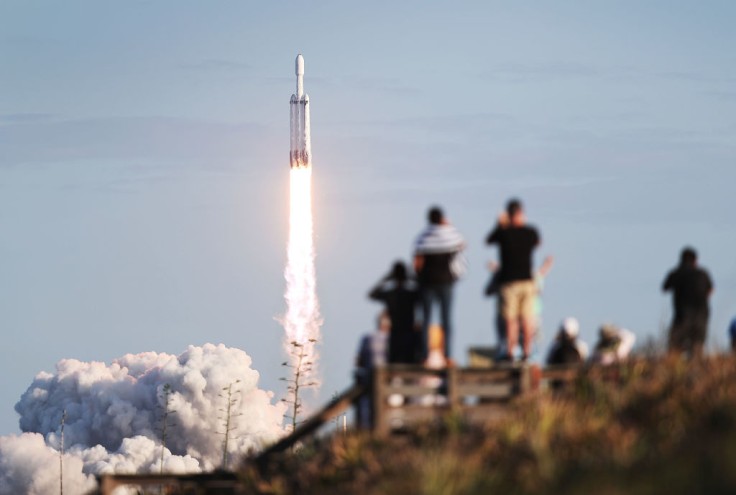
The SpaceX Dragon splashdown caused a sonic boom in Florida, surprising many of its residents last Thursday night. Lucky skywatchers captured the spacecraft's re-entry in stunning video clips.
When SpaceX Dragon 2 spacecraft successfully splashed down in the Atlantic Ocean, a sonic boom was heard in certain parts of Florida. The spacecraft also caused shock waves, or minor ground tremors, during its splashdown.
According to NASA, a sonic boom creates thunder-like noise, similar to aircrafts or other type of aerospace vehicles flying overhead. These aerospace vehicles produce sonic boom whenever they fly faster than the speed of sound.
SpaceX Dragon Splashdown Video and Effects: Florida Residents Report Sightings
A notable resident who spotted the spacecraft was Action News Jax reporter Danzi Bozzini. She tweeted a video clip of Dragon's re-entry, resembling a fireball or shooting star streaking past the night sky. The spacecraft engine sounds were clearly heard in the video clip.
Twitter user Derek Galloway replied to the video, saying he and his family "heard a loud boom" and experienced his whole house shake during the event. He mentioned how Florida coast was at least 45 minutes or an hour away from his house, implying the sonic boom had a huge range.
I was just getting in with my wife and two kids and we heard a loud boom in the whole house shook right in the middle of Orange Park Florida that's a long ways from the coast at least 45 minutes to an hour to feel it way over here
— Derek galloway (@Derekgalloway19) October 1, 2021
The AMS certified broadcast meteorologist James Spann also captured the scene. He said, "a sonic boom accompanied it. Splashdown has been confirmed; it was the 23rd cargo/resupply mission to the International Space Station."
More video of the SpaceX Dragon re-entry over Alabama tonight… from Nikki Ziello. A sonic boom accompanied it. Splashdown has been confirmed; it was the 23rd cargo/resupply mission to the International Space Station. pic.twitter.com/WYnw9932Y3
— James Spann (@spann) October 1, 2021
SpaceX 23rd Resupply Mission to the ISS: Return Home Flight
The return of the Cargo Dragon capsule marked the completion of SpaceX's 23rd commercial resupply mission (CRS-23) for ISS.
After its ~one-month stay at the @space_station, the Dragon spacecraft supporting SpaceX’s 23rd resupply mission for @NASA will undock from the orbiting lab tomorrow at 9:05 a.m. EDT. Watch live beginning at ~8:45 a.m. → https://t.co/regErh6cuH pic.twitter.com/EGZ58U5lw2
— SpaceX (@SpaceX) September 29, 2021
For reference, Dragon 2 launched aboard SpaceX Falcon 9 rocket on August 29. According to NASA's reports, the spacecraft brought scientific experiments and technology relating to research on bone health with botanical plants. The research also aims to improve crew eye heath, demonstrate robot dexterity, expose construction material to the space environment, mitigate stress in plants and many more.
The Dragon 2 spacecraft docked on ISS for a one month stay and officially came back to Earth this week. Typically, Dragon spacecraft performed splashdown landing to maximize safety precautions, taking advantage of the distant and secluded Atlantic Ocean.
Other Interesting Space News
Aside from the SpaceX Dragon 2 hype, more exciting events are set to happen in NASA. Its Lucy spacecraft, designed to endure millions of years as a historical relic, would launch sometime this month. Lucy's full milestones and schedule dates are now available. Lucy will start its 12 year journey in space to explore the Trojan asteroids.
NASA invites space fans to join the #LucyTimeCapsule to celebrate the event. This means creating your own time capsule, similar to the Lucy spacecraft. Full details of the challenge are available in this article.









